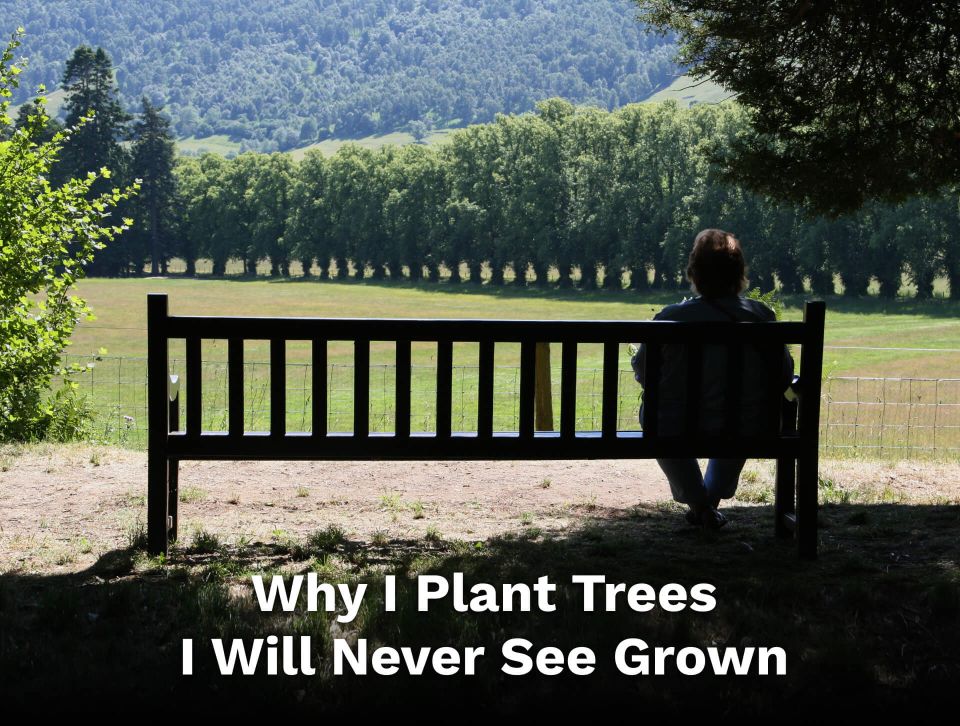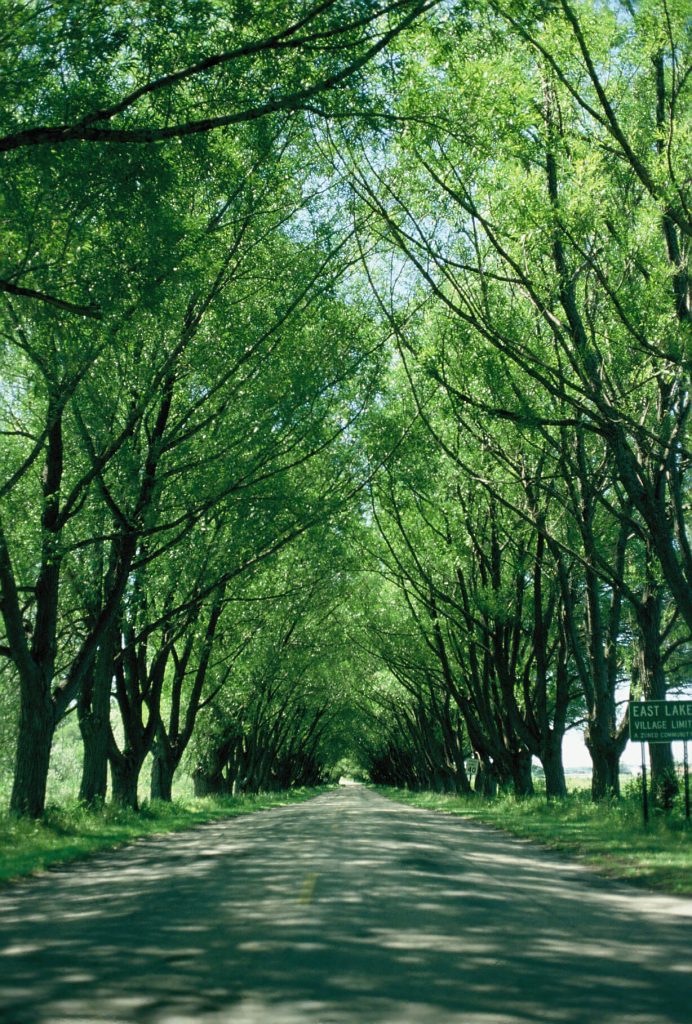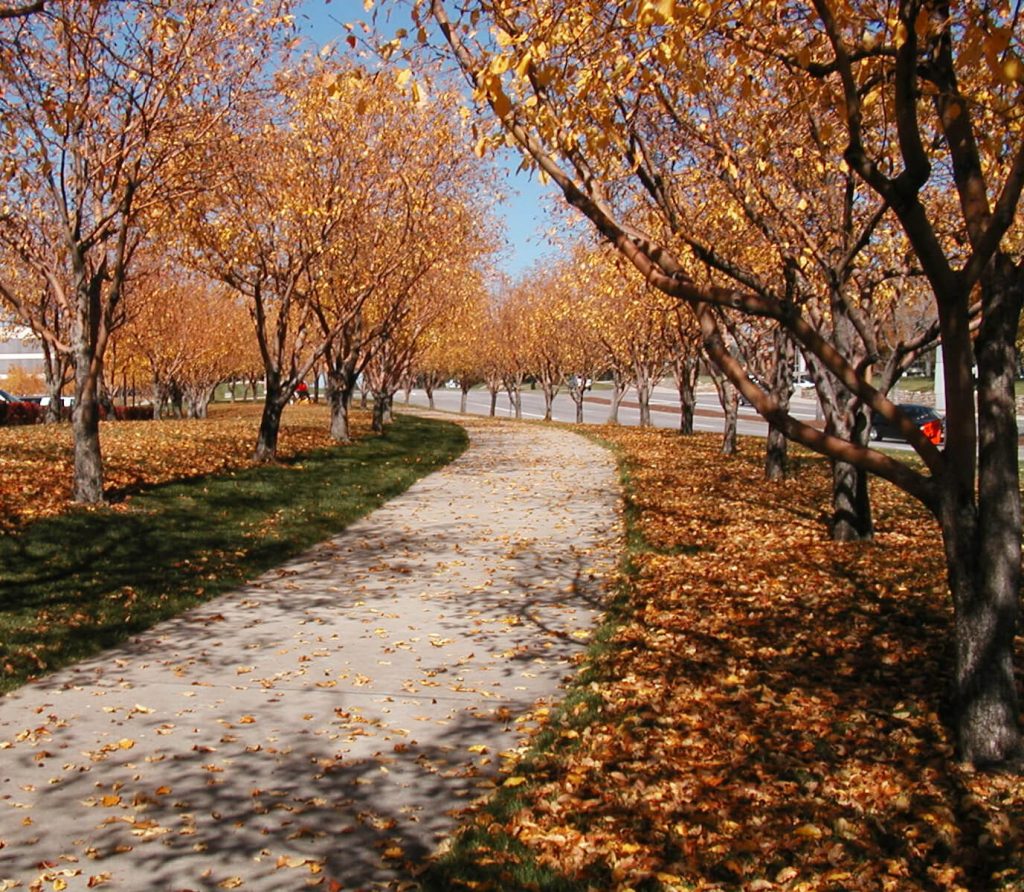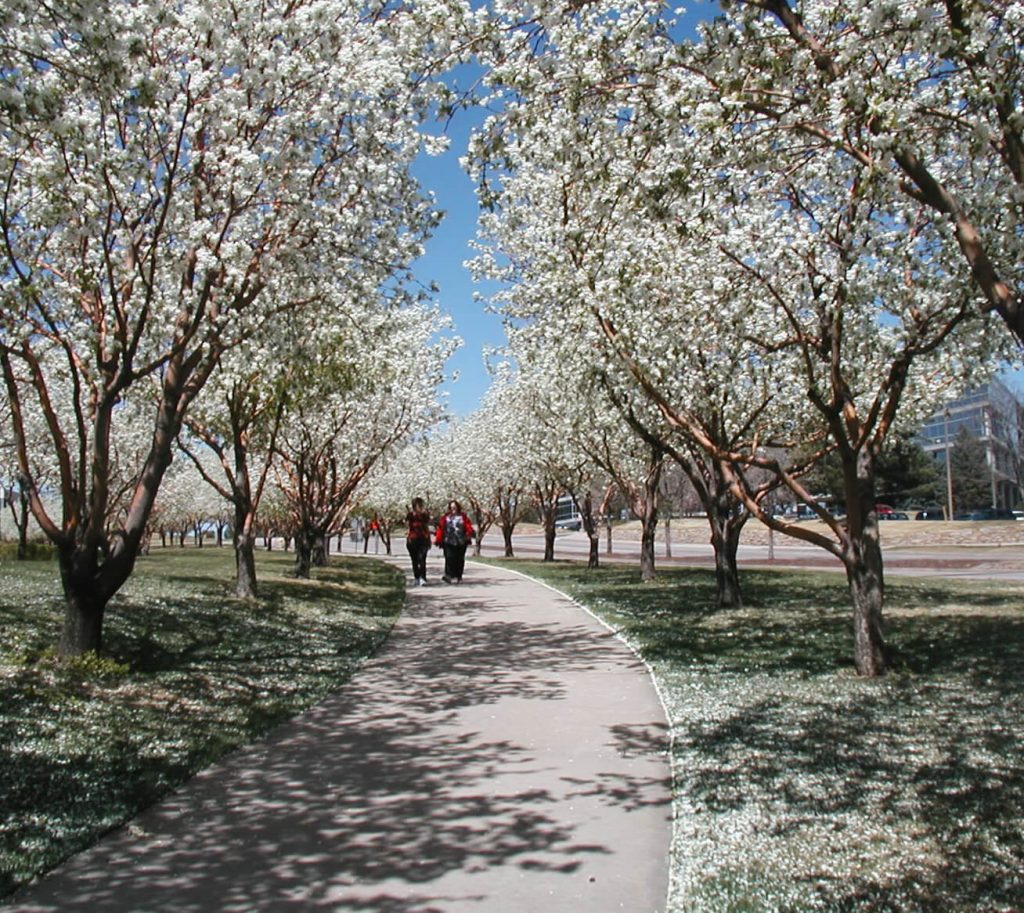
“A society grows great when old men plant trees whose shade they know they shall never sit in.”
When an old person plants a tree they know well that they will likely not live to see the plant grow up to bear fruits or enjoy its shade, still, they do it so that future generations will benefit from it.
Trees are a key component of any sustainable and resilient community.

They provide us with many practical benefits like:
- Food, like nuts and fruits
- Shade to cool our homes and cities, mitigating the impact of the urban heat island effect. Transpiration from trees further cools the atmosphere like giant swamp coolers.
- Trees make our streets safer by changing the scale of the street, influencing driver perception, and slowing them down.
- Trees hold lots of water in a rain event, slowing stormwater run-off and the potential for flooding.
- Forests and other nonagricultural lands absorb a net of 13 percent of U.S. carbon dioxide emissions.
- Trees sequester carbon from the atmosphere, reducing the greenhouse effect, all while releasing oxygen.
- Stress relief-researchers have found that certain works of art or natural scenes are visually appealing and stress-relieving – and one crucial factor is the presence of the repetitive patterns called fractals. Exposure to natural patterns & fractals like trees can reduce stress by up to 60%.
- People have a sense of history in old trees. Mature trees instill a sense of establishment and security. They are stately and have withstood the test of time, often for generations. The Banyon tree in Lahaina is an excellent example.
The average lifespan of a newly constructed house is 70–100 years, assuming exceptional maintenance. The lifespan of trees can be as much as 300 years or more, depending on the species. The growing conditions we provide for them will dramatically impact lifespan. Given the right conditions to thrive, trees can outlive many of our homes by generations, providing all the benefits listed above for decades and even centuries.
Trees should be considered a critical part of future urban infrastructure development and the design of our cities, towns, and neighborhoods. They cannot be an optional item, planted when all other needs, real or perceived, are met.

Those of us who work in community development or “city building”, as we often refer to it at Consilium
Design, understand that the noted Greek proverb applies to much more than the planting of trees. The work we do to create great places for living should focus on more than a flashy branding campaign to get the sale of a new home to the first homeowner. It should be focused on how we build places that will be “home” for generations to come.
When we advocate through our designs for narrower streets, it’s not just to save our client money. It’s to reduce the amount of impervious asphalt and concrete we introduce into the environment, the pollution created by its manufacture, and the expense of perpetual maintenance. It’s because narrower streets are safer streets. It’ because land not used for streets can be land for homes, open space, and biodiversity within the community.
When we design and advocate for higher density, It is not just for the bottom line. It is to give people more opportunities to be less automobile-dependent and have better access to transit and other community resources. It is to make housing more attainable and closer to employment.

When we integrate public spaces as the focus of our designs, we advocate for a fundamental right of a free society- freedom of movement and public assembly, in all its forms.
We are creating a backdrop for the growth of healthy and free communities.
As “city builders”, we will never live in most of the places we create, but the “trees we plant” both literally and figuratively, will provide shelter and shade for our children and many future generations.